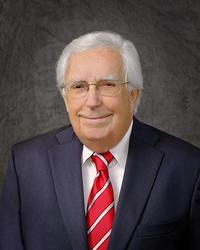Nicholas A. Pittner is a first-generation college student from Ottoville who began at The Ohio State University at Lima in 1960 when courses were housed at Lima Senior High School. He earned his Bachelor of Arts in Economics in 1964 and went on to graduate from law school. He has served as the trial counsel for numerous precedent-making cases involving education law at the state- and federal-court levels, including the constitutionality of Ohio’s school funding laws in DeRolph v. State of Ohio. He is Ohio State Lima’s 2018 Alumni Hall of Fame Recipient.
His retirement project has been to write a book focused on collective bargaining in the public sector – Better Bargaining: Navigating the Minefield of Public Sector Collective Bargaining. The depth of experience that comes from his nearly 40-year experience in public sector collective bargaining provides the framework for many of the examples in the book.
